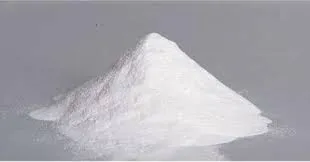
Oct . 05, 2024 07:26 Back to list
Exploring the Properties and Applications of Hydroxypropyl Methylcellulose in Various Industries
Hydroxypropyl Methylcellulose (HPMC) A Versatile Polymer in Modern Applications
Hydroxypropyl methylcellulose (HPMC) is a semi-synthetic polymer derived from cellulose, a naturally occurring polymer found in plant cell walls. Known for its exceptional versatility, HPMC has gained widespread use across various industries, including pharmaceuticals, food production, and construction.
Hydroxypropyl Methylcellulose (HPMC) A Versatile Polymer in Modern Applications
In addition to its use in pharmaceuticals, HPMC plays a crucial role in the food industry. It serves as a food additive, primarily as a thickener and stabilizer, enhancing the texture and shelf life of various food products. Its emulsifying properties help in the production of sauces, dressings, and ice creams, where it ensures a smooth and homogenous mixture. Moreover, HPMC is considered a suitable option for vegan and vegetarian products, as it is derived from plant cellulose and does not contain animal-derived ingredients.
hpmc hydroxypropyl methylcellulose

The construction industry also benefits significantly from the properties of HPMC. It is used as an additive in cement-based formulations, providing improved workability and adhesion. When added to mortar and plaster, HPMC enhances the flow properties, making it easier to apply. Furthermore, it aids in the control of water retention, which is essential for proper curing and hardening of construction materials. The use of HPMC in construction not only improves performance but also contributes to sustainability by allowing for lower water usage during mixing.
Beyond these traditional applications, HPMC has found its way into cosmetics and personal care products. Its thickening and emulsifying properties make it an ideal ingredient in lotions, creams, and shampoos. HPMC helps maintain product stability while enhancing the sensory experience, providing a smooth and luxurious feel on the skin or hair. As consumers increasingly seek natural and non-toxic ingredients, HPMC’s plant-derived nature positions it as a preferred choice in formulations.
Environmental sustainability is a growing concern across many industries, and HPMC fits well within this context. Since it is derived from renewable cellulose sources, its production can contribute to a more sustainable future. Additionally, HPMC is biodegradable, which helps reduce environmental impact compared to synthetic alternatives.
In conclusion, hydroxypropyl methylcellulose is a versatile and valuable polymer that spans multiple industries, playing crucial roles in pharmaceuticals, food, construction, and cosmetics. Its unique properties, such as thickening, emulsifying, and controlled-release capabilities, make it an indispensable ingredient in many products we use daily. With a focus on sustainability and a shift towards natural ingredients, HPMC’s significance is likely to grow in the coming years, offering innovative solutions across various sectors. As industries continue to evolve, HPMC stands as a testament to the power of chemistry and innovation in addressing modern challenges.
-
Versatile Hpmc Uses in Different Industries
NewsJun.19,2025
-
Redispersible Powder's Role in Enhancing Durability of Construction Products
NewsJun.19,2025
-
Hydroxyethyl Cellulose Applications Driving Green Industrial Processes
NewsJun.19,2025
-
Exploring Different Redispersible Polymer Powder
NewsJun.19,2025
-
Choosing the Right Mortar Bonding Agent
NewsJun.19,2025
-
Applications and Significance of China Hpmc in Modern Industries
NewsJun.19,2025







